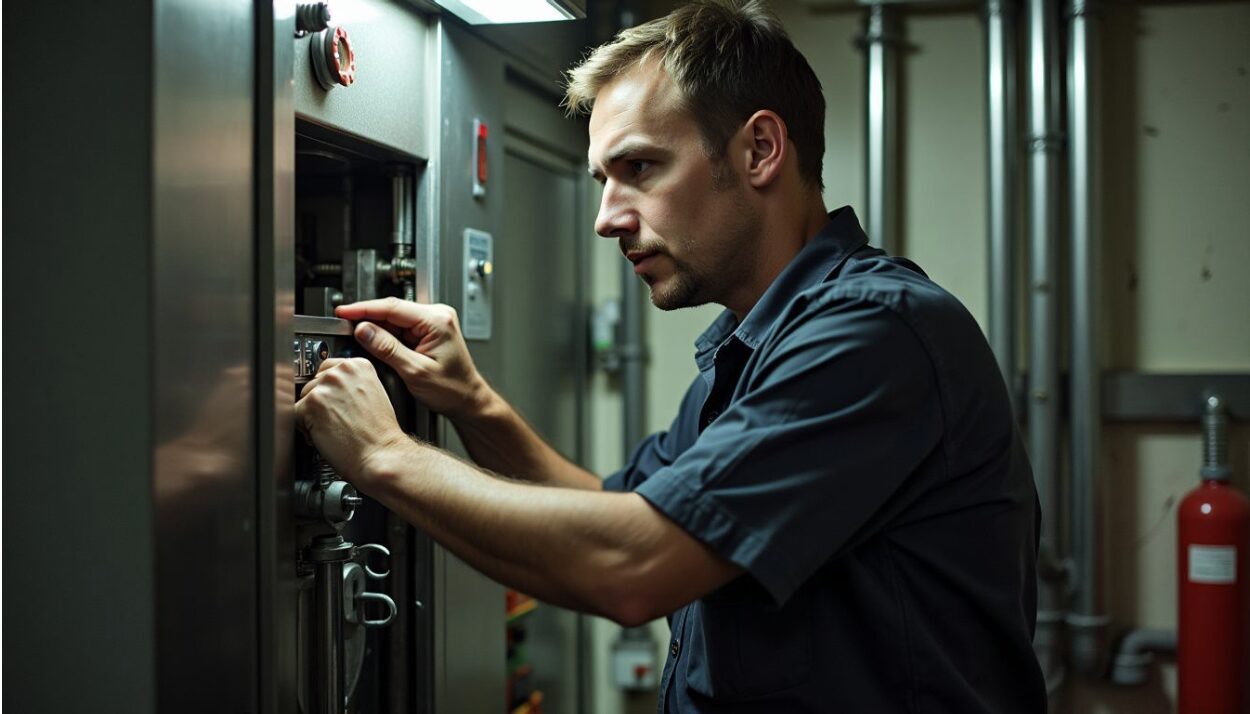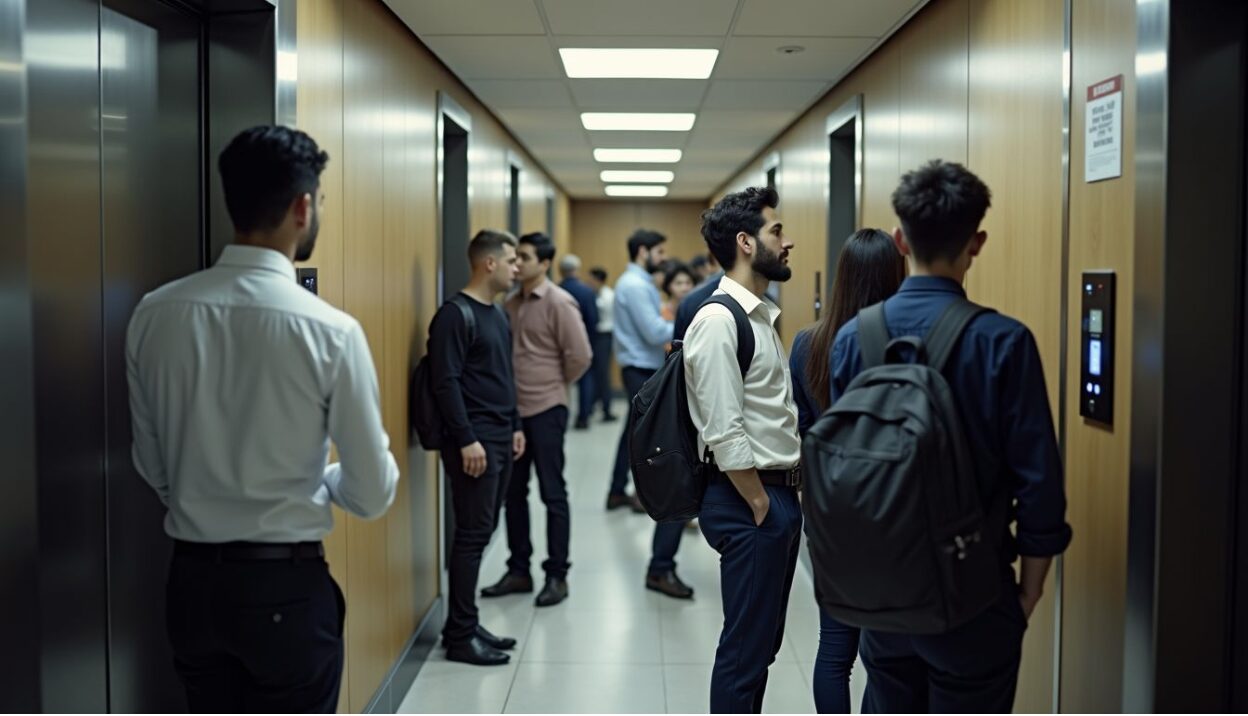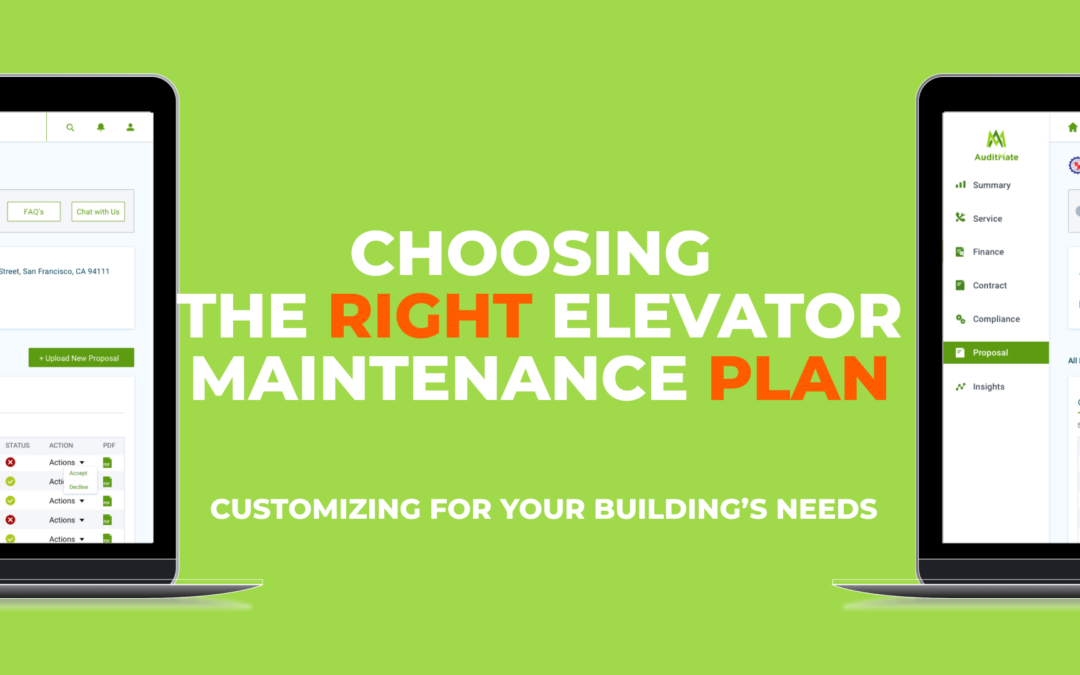Elevator malfunctions can cause significant disruptions. Regular maintenance is crucial for optimal elevator performance. This article provides guidance on selecting the most suitable maintenance plan for your building.
Understanding Your Building’s Elevator Needs
Identifying your building’s specific elevator requirements is critical. Consider factors such as usage frequency and building type.
Building type and usage
Different buildings use elevators in unique ways. Office towers have many people riding up and down all day. This means their elevators work hard and need lots of care. Apartment complexes might see less action but still need reliable lifts for families, especially during busy times like mornings and evenings.
The right elevator maintenance plan ensures safety, reliability, and longevity.

Shopping centers have their own needs as well. Here, elevators move shoppers and goods throughout the day. Each type of building must choose a maintenance plan that fits how its elevators are used to keep them running smoothly and safely.
Frequency of elevator usage
After understanding the type of building and its use, you need to look at how often people use the elevators. This is a big part of choosing your elevator maintenance plan. If your elevators are busy all day, they will wear out faster.
This means they’ll need more care. Think about an office building with many workers or a mall where hundreds of people come and go. Here, elevators run almost non-stop during open hours.
For buildings with less traffic, like small apartment blocks or private spaces, elevators don’t work as hard. They might not need as much maintenance. But no matter how much or little they’re used, all elevators must follow state rules for safety.
This keeps them running well and safely for everyone who uses them. So, think about how many rides your lifts take each day when planning your upkeep tasks.
Key Elements of Elevator Maintenance Plans

A solid elevator maintenance plan makes sure your elevators run smoothly and safely. It focuses on regular checks and keeping parts well-oiled, aiming to prevent problems before they start.
Regular inspections
Regular inspections are key to keeping your elevator safe and running smoothly. They help find problems early.
- Look at all safety systems to make sure they work right. This includes doors, emergency stops, and alarms.
- Check the elevator’s moving parts like cables and pulleys for wear.
- Test the elevator’s speed and smoothness of ride to see if adjustments are needed.
- Inspect the machine room for any signs of leaks or damage.
- Review maintenance records to track the elevator’s history and predict future needs.
- Make sure the elevator follows state rules and regulations for safety.
- Talk to users about any issues they have noticed with the elevator’s performance.
- Plan ahead for replacement of parts that wear out often.
- Work with a trusted lift maintenance company that knows your building well.
- Adjust the maintenance schedule based on how much the elevator is used.
Doing these checks helps avoid big repairs later on.
Lubrication of moving parts
After checking your elevators during regular inspections, the next step is making sure they work smoothly. Lubrication of moving parts is key here.
- All moving parts in your elevator need oil. This stops them from wearing out fast.
- Every few months, a professional should check and oil these parts. This helps your elevator run well.
- The right kind of oil matters a lot. Your maintenance team knows which type works best for each part.
- This job isn’t just about putting oil on things. It’s also checking if parts are too worn and need replacing.
- Doing this lowers the chances of your elevator breaking down unexpectedly.
- A smooth-running elevator keeps everyone safe as they use it.
- Over time, this care saves you money by avoiding big repairs.
- The state sets rules on how often to do this to make sure elevators are safe.
So, keeping up with oiling the moving parts is a simple yet powerful way to look after your elevators.
Emergency services
Moving parts need regular oil to work well. But sometimes, even with the best care, things go wrong. Your elevator might stop working right. This is where emergency services come in.
You want quick help when there’s a problem.
A good elevator service plan will have people ready to help any time, day or night. They fix issues fast so your building stays safe and works well. Think about how much you use your elevators and pick a plan that matches this need.
Fast help can save you worry and keep everyone using the elevator safe.
Customizing Your Maintenance Plan
Customizing your elevator maintenance plan lets you match services to what your building really needs. It’s about choosing the right mix of care—whether that’s more inspections or fixing parts before they break.
Comprehensive vs. Basic Plans
Comprehensive plans cover a lot. They offer regular checks and keep parts moving well. These plans also help when there’s an emergency. Basic plans do less but still follow state safety rules.
Choosing between these depends on your building’s needs. Think about how often people use the elevator and what kind you have. A custom plan makes sure your elevator is safe and lasts longer.
It fits just right for what your building needs.
Adjusting services based on usage patterns
Elevators work hard, just like you. They need care based on how much they are used. To keep them running smooth, think about these steps:
- Track how often your elevator runs each day. More trips mean more wear and tear.
- Look at busy times. Extra use during morning or evening? Plan checks right after.
- Check for slow seasons. Use less in summer? Schedule big fixes then.
- Ask users about problems. Hear a strange noise or a delay? Get it checked sooner.
- Update your plan yearly. Learned something new? Change the plan to fit better.
- Compare plans with similar buildings’. What works for them might help you too.
- Think about safety rules from the state. Make sure your plan meets all needs to keep everyone safe.
- Pick services that match your lift’s age and type. Older lifts might need more care.
- Set up quick help for breakdowns based on past issues you’ve had.
- Review costs vs benefits each year to make sure you’re getting what you pay for.
This way, your elevator stays in top shape, keeping everyone moving safely and happily.
Benefits of a Tailored Maintenance Plan
A customized maintenance plan keeps your elevators running smoothly for longer. It also ensures safer and more reliable lifts for everyone in the building.
Extended elevator lifespan
Maintaining your elevator properly can extend its lifespan. It results in less expenditure on repairs or part replacements. A perfectly maintained elevator also complies better with state standards, securing everyone’s safety.
Preventive measures can avoid greater damage.
With a customized maintenance program, you frequently inspect and lubricate the moving components. This enables the elevator to operate seamlessly over an extended period. Choosing a suitable company to manage your elevator is critical to guarantee its longevity while maintaining its reliability and safety.
Improved safety and reliability
Custom plans make your elevator safer and work better. You follow state rules to keep things safe. This means elevators break down less and last longer. A plan that fits your building stops problems before they start.
Choosing a good company helps too. They check everything and fix parts that move. This keeps everyone who uses the elevator safe. Your choice can make a big difference in how well the elevator works every day.
Conclusion
Choosing the right elevator maintenance plan, combined with the proper SaaS tools, gives you control over your building’s operations like never before. You can spot problems early, which means less downtime and more safety for users. This approach saves money on repairs and also extends the life of your elevators. As a building owner or facility executive, using these technologies helps you make smarter decisions that maintain continuous operation of your systems. Ensure your team is well trained in these tools to fully benefit from their potential.
AuditMate stands out by tracking your elevators with advanced technology. This ensures you’re always updated on your lift’s status—and scheduling timely services becomes effortless.
Looking for reliable elevator services? Reach out to AuditMate. They provide the essential solutions for safer, more efficient elevators.
FAQs
1. What’s important to consider when choosing an elevator maintenance plan for my building?
When selecting a plan, think about your building’s specific needs. Consider the age of your elevators, their usage levels, and any unique features they might have.
2. Can I customize an elevator maintenance plan to fit my building’s needs?
Absolutely! Customization is key in ensuring that your elevators are properly maintained and safe for use. Think about what specific services you need – this will help tailor a plan that fits like a glove.
3. How can I make sure the chosen elevator maintenance plan is right for me?
Check if the plan covers all necessary aspects of upkeep, from routine checks to emergency repairs. Also, ensure it aligns with your budget without compromising on safety or efficiency.
4. Does having the right elevator maintenance plan really make a difference?
Indeed it does! A well-chosen and customized maintenance plan ensures smooth operation of your elevators while minimizing downtime due to unexpected issues – making life easier for everyone in your building.

